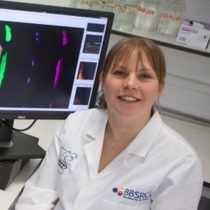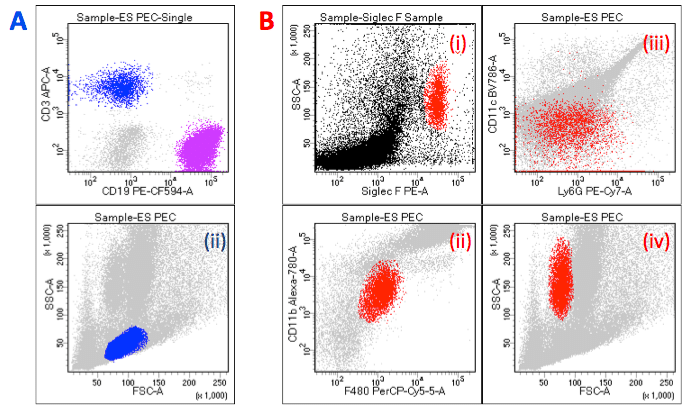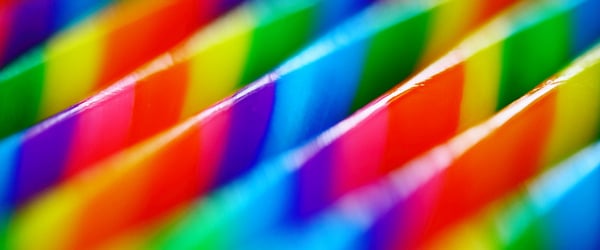Cell sorters do not operate by magic, even it looks that way. It’s about the application of physics, electronics, fast computers and formation of droplets.
Whether you bring your cells to a flow core to be sorted or you sort them yourself, it important to know how the cell sorter works.
Cells can be sorted by mechanical sorters, but most sorters today are electrostatic sorters. These include the Becton Dickinson FACSAria and Influx and Beckman Coulter MoFlo Astrios. This article will concentrate on how these common sorters work.
Same optics and electronics as an analyzer
Similar to flow cytometric analyzers, your sample is pressurized and passed through the laser beam(s), where scatter and fluorescence are detected and measured. The detected photons are converted to electrical signals and are shown on the computer screen as dots.
Enjoying this article? Get hard-won lab wisdom like this delivered to your inbox 3x a week.

Join over 65,000 fellow researchers saving time, reducing stress, and seeing their experiments succeed. Unsubscribe anytime.
Next issue goes out tomorrow; don’t miss it.
For sorting, gates/regions must be placed on your cell population of interest to separate out the specific cells you want to collect. For example, GFP+ (green) cells can be separated from GFP– (non-green) cells.
Droplet formation
Also like a flow analyzer, cells are hydrodynamically focused within the nozzle assembly of the sorter. However, in analyzers, cells tend to flow up, while in sorters they obviously flow downwards. This separates the cells out like a string of pearls.
To separate each cell, it needs to be encased in a droplet. Uniform droplets are formed by vibrating the stream with a transducer, usually a piezo-electroic crystal acoustically coupled to the nozzle. The transducer applies a known frequency and amplitude to the stream. The frequency determines how many droplets are formed. For example a frequency of 80, 000 Hz generates 80,000 droplets a second. The amplitude is how hard the stream is being vibrated.
The stream can be viewed on the sorter using a camera and a strobe.
Drop delay
The drop delay is the time (distance) it takes for a cell of interest to pass through the laser interrogation point and be in the last attached droplet. The calculation and monitoring of the drop delay is crucial to ensure that the correct droplet (and therefore the correct cells) are being sorted.
The drop delay is calculated by either sorting beads at known drop delays onto slides to be counted under a fluorescent microscope or by viewing fluorescent beads being sorted into a side stream. The method for calculating depends on which machine you are using.
The “Sweet spot” software of the Aria monitors the last attached droplet and the gap between that droplet and the first droplet and adjusts the amplitude to keep the drop delay in the same place. On machines such as the Influx, the operator manually adjusts the amplitude to keep the drop delay constant, as there is no automatic software.
Charging the droplet containing your cell of interest
Once the cell of interest has reached the last attached droplet, the droplet is charged by passing a charge down the stream. As this droplet detaches it will carry the charge with it. Each droplet is independently charged, and the droplets can have a positive, negative or no charge. Unwanted cells or empty droplets will not be charged. Cells to be collected receive a charge that ensures they will be sorted into the right tube. Some of the new sorters can sort 6 populations! This is done by applying 6 different charges to the droplets.
Deflecting the droplet
The individual drops pass through a static electrical field, which is created by two charged plates (charge ranges between 2000–6000 V). The charged droplets are attracted to the opposite polarity and will be deflected into a collection tube or plate. Unwanted events pass straight down through the plates and into the waste collector.
So instead of saying abracadabra, remember its really thousands of separate cells passing inside droplets, through the machine and into your collection tube.
And the magic is that this is done with little effect on your cells.
You made it to the end—nice work! If you’re the kind of scientist who likes figuring things out without wasting half a day on trial and error, you’ll love our newsletter. Get 3 quick reads a week, packed with hard-won lab wisdom. Join FREE here.







